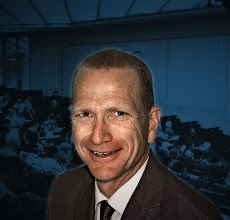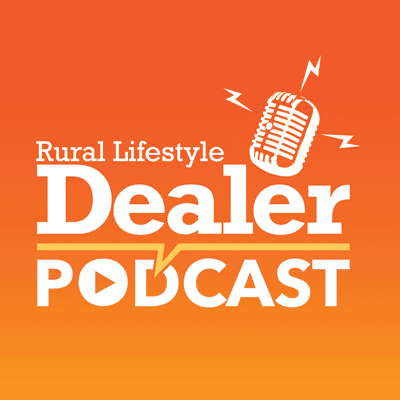In this Q&A with Rural Lifestyle Dealer, sales coach Greg Martinelli talks through why outside sales should be part of your rural equipment marketing strategy and how to start overcoming fears that may be holding you back. Martinelli draws on 28 years as an ag sales professional.
“If there was a time when you need to do something different, it's today. Customers can get their information and their products from multiple sources and you need to stand out,” says Martinelli. Read on to learn more.
Rural Lifestyle Dealer: Can you highlight what you see as the benefits of outside sales?
Greg Martinelli: You have a different customer connection when you make an on-site visit. It shows that you care about their business enough to make a personalized visit and it changes the relationship you have with them. It’s the starting point to becoming one of their trusted advisors.

Greg Martinelli is a sales coach with over 28 years experience as an ag sales professional.
Check out Greg Martinelli’s new book, “A Season for Sales: Your Guide to Ag Sales Success.”
RLD: Can you run through the top 5 fears that keep dealers and salespeople from starting or succeeding with outside sales?
Martinell: The first one is the fear of cold calling, just the idea of driving up and what to first do and say. The second is the fear of feeling incompetent. This might come into play if someone has limited knowledge about the landscaping business, for instance.
Third, the fear of being too “salesy” or too pushy. The fourth one is the fear of asking probing questions and the fifth is the fear of calling on the big account.
RLD: Can you break down how to work through those fears?
Martinelli: It’s best if you’ve already turned the cold call into a warm call, such as in the instances where you’ve already answered a question by email or phone call or met them at an event. For some commercial customers, you may need to set up an appointment.
However, regardless, you need to reframe your purpose for that first visit. Do not go out with the intent of talking about features and benefits about your products and hoping to close a sale. I know you want to be efficient with your time, but, many times, making a sale takes a lot longer than most people think it will take.
Instead, use that visit to observe their properties or operations — and ask questions about what they are trying to accomplish. Learn what they are struggling with so you can identify how to help them, whether it’s through new equipment, parts or service. This approach also helps you gain confidence and competence because you are becoming educated on their particular situation. Be willing to learn and don’t exaggerate your knowledge or experience.
During subsequent conversations, you can move on to ask more probing questions as you further the relationship with them and they begin to share more.
RLD: Can you talk through the mechanics of that initial visit?

Listen to the full interview with Greg Martinelli.
Martinelli: First, it’s best to go out in a company vehicle that clearly identifies the dealership. If you are in an unmarked vehicle, people will be much more wary.
On that first visit, I would simply give them my card and say that I’m ready to help whenever they might need something related to their equipment or property maintenance. An introductory line might be, “I’d love to come back and talk with you sometime, but I don’t want to take up a lot of your time right now.”
Your goal is to try to get contact information — that’s the secret for follow-ups. Many people are getting so much spam emails, phone calls and even texts, unfortunately, that they may not want to share their info. Still, if they remember you as the person who took the time to visit them, that will benefit you down the road.
Finally, if you do get some contact info or they say to come back another time, be sure that you follow up. Many sales are lost because of a lack of prompt follow-up communication.
RLD: You talked about the fear of being salesy, which is a tough one because that’s your job, to earn sales. What are your thoughts on that?
Martinelli: Remember that everything around you is sold and everybody is selling something, whether they call themselves salespeople or not. I encourage you to believe that what you do as a salesperson is valuable. You bring all the resources of your company together as a single point of contact. That’s the best way for customers to get the most value from your dealership.
One thing to keep in mind, though, is to go as long as you can without trying to sell. That will build trust that you have the customer’s best interest in mind. The struggle is that most salespeople think their job is to spread the word about their company and its products. It's not. It's to go out there and learn about the customer and their needs and offer them a solution that’s the right fit for them.
RLD: You talked about the importance of asking questions. Can you provide some examples of how to do that effectively?
Martinelli: Do what you can to keep the attention on the customer. Start by looking around and sizing up their property or operation. Be interested and say that you’d like to learn more about what they do. Ask how they got into business or what they would like to do next. Then, let them talk. Let them take you on their journey. It should look a little like a trip guided by GPS, with their answers guiding the next turn in the conversation.
This conversation might naturally lead into a tour of their property or facility. That can help you understand even more opportunities for you to work together. It could also lead to a demo at the dealership where you can show how a piece of equipment would help them achieve their goals.
RLD: What about overcoming the fear of calling on the big accounts? What strategies can help a salesperson work through those situations?
Martinelli: Here are a few things to keep in mind. First, the larger accounts, such as landscapers, municipalities or school systems need a supplier and they need ongoing support. Their equipment is heavily used and they need to have a resource to help them get back up and running quickly.
Find out about their purchase schedule so that you don’t miss the deadline for making a presentation or submitting a bid. Find out what current problems they might be having and show how you can address those issues.
And, be respectful of their time. Make appointments, keep them and follow up. And, for all your customers look for touch points throughout the year where there’s a good reason to follow up with them. Maybe it’s based on their seasonal needs or promotions on equipment they are interested in or to see if their equipment needs service.
RLD: As a salesperson, what do you still struggle with?
Martinelli: There are two areas I struggle with and that’s efficiency and effectiveness. When I was selling ag products, I had a big geography to cover. I had to make sure that I was covering the part of the territory where I could make sales without losing track of the other areas.
I also have to keep focused on making appointments and to be prepared to work in another contact if an appointment is canceled. That’s when you can develop those warm calls, letting people know that you are in the area.
I’ve also found that it tends to be easier to get the first appointment than follow-on appointments. That’s when you really have to work to make the next contact of value to a customer.
For more information on Greg and Ag Sales Professionals, go to https://www.gregmartinelli.net/.





Post a comment
Report Abusive Comment